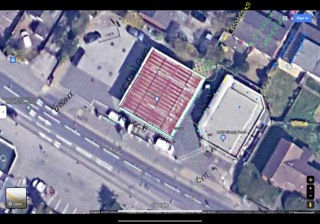The Higgs Boson
- amcm collaborator
- May 10
- 3 min read
*This article will be updated sporadically

The Higgs boson is a subatomic particle that was first proposed by physicist Peter Higgs in the 1960s as a way to explain why particles have mass. It is part of the Higgs field, which is thought to permeate all of space and give particles mass as they interact with it. The Higgs boson was discovered in 2012 by the Large Hadron Collider (LHC) experiment at CERN in Switzerland, after decades of theoretical and experimental work. Its discovery was an important milestone in our understanding of the fundamental nature of matter and the universe, and it confirmed the existence of the Higgs field and its role in giving particles mass.
The Higgs boson is the fundamental particle associated with the Higgs field, a field that gives mass to other fundamental particles such as electrons and quarks. A particle's mass determines how much it resists changing its speed or position when it encounters a force.
Aha… Isn’t it ALL relative?
What’s the size/mass of the other articles within the same dimensions of time and space? Thus making the particle we are viewing semantically and visually subatomic
Key Clarifications:
1. Higgs Boson:
The Higgs boson is a fundamental particle associated with the Higgs field, responsible for giving mass to other particles. It’s extremely short-lived (~10^-22 seconds) and decays into other particles almost immediately after being produced.
2. Observing Particles within the Higgs Boson:
The Higgs boson is not composed of smaller particles like a proton or atom. It’s an excitation of the Higgs field — a fundamental particle in the Standard Model. So we cannot observe “particles inside it” in a classical sense.
3. n-body Quantum System:
In quantum mechanics, an n-body system usually refers to a system of interacting particles — used in atomic, nuclear, or condensed matter physics. For high-energy particle physics (like Higgs interactions), you’d be dealing with multi-particle scattering systems analysed via quantum field theory and Feynman diagrams.
Interpreting the Question:
Essentially asking in the first experiment:
Given a particle in a spacetime context, what are the other objects in that context (in terms of size/mass)?
How do those relative sizes/masses shape our perception of the original particle as “subatomic”?
A Viable Quantum Experiment Angle:
To explore quantum properties and decay patterns of the Higgs boson in an n-body context, here’s what could be posited:
1. Simulate Higgs Interactions in an n-Body Quantum System
• Use lattice quantum field theory (LQFT) to simulate multiple particles (n-body system) where the Higgs field interacts with fermions and bosons.
• Example: Simulate Higgs boson decay into four leptons (e.g., H → ZZ* → 4l), which is a well-known 4-body system.
2. Experimental Design (in Thought or Simulation)
• Use collider data (e.g., from the LHC) to analyse decay channels of the Higgs boson with quantum correlations between final-state particles.
• Focus on quantum entanglement, interference patterns, or Bell-type inequalities in the decay products to probe deeper quantum behaviour.
3. Quantum Information Perspective
• Some researchers are exploring entanglement entropy in Higgs decays.
• You might investigate whether information theoretic measures can distinguish the quantum state structure of particles resulting from a Higgs decay — effectively treating the decay products as a quantum n-body system.
Simulated via an N-Body Simulation



*No claim was made on this occasion
Comments